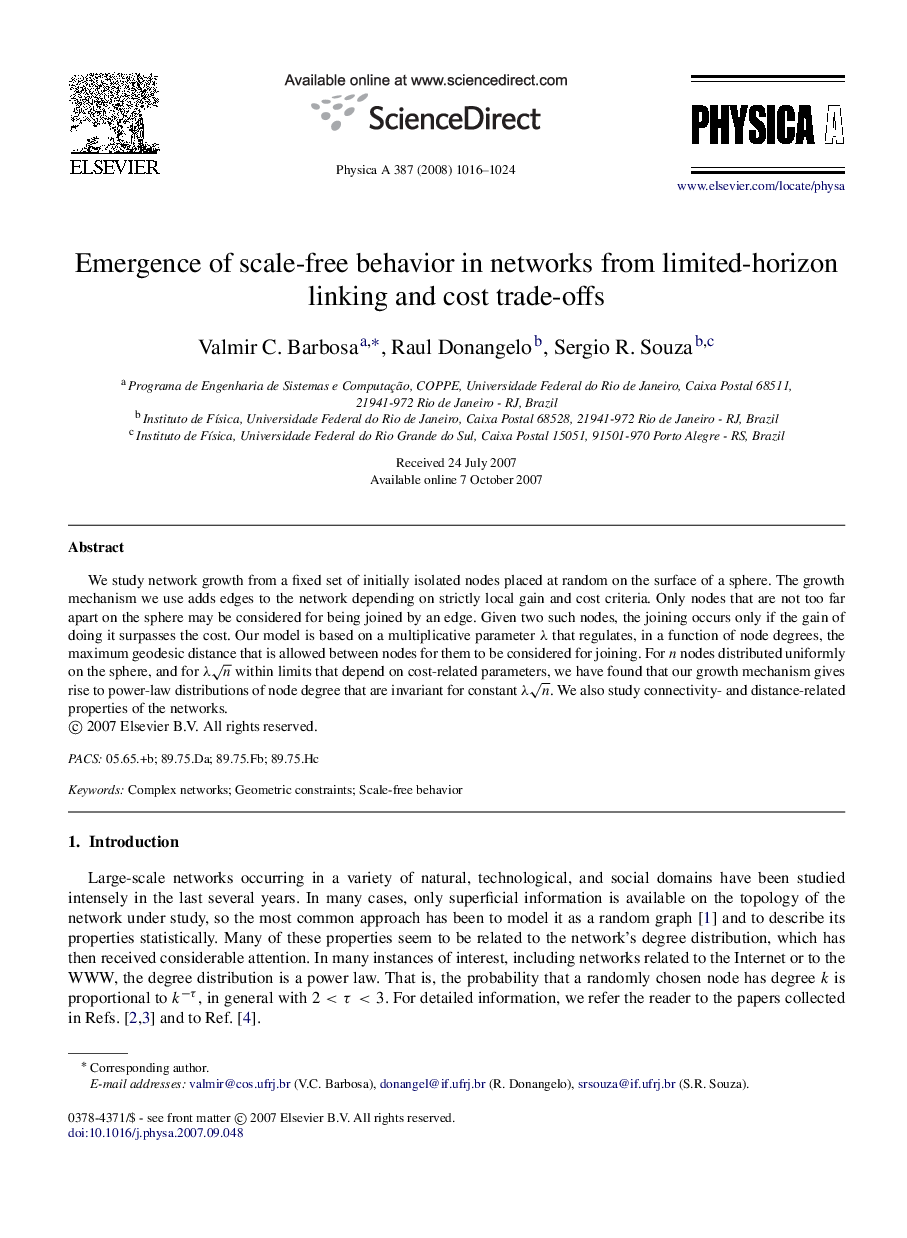| Article ID | Journal | Published Year | Pages | File Type |
|---|---|---|---|---|
| 976556 | Physica A: Statistical Mechanics and its Applications | 2008 | 9 Pages |
Abstract
We study network growth from a fixed set of initially isolated nodes placed at random on the surface of a sphere. The growth mechanism we use adds edges to the network depending on strictly local gain and cost criteria. Only nodes that are not too far apart on the sphere may be considered for being joined by an edge. Given two such nodes, the joining occurs only if the gain of doing it surpasses the cost. Our model is based on a multiplicative parameter λ that regulates, in a function of node degrees, the maximum geodesic distance that is allowed between nodes for them to be considered for joining. For n nodes distributed uniformly on the sphere, and for λn within limits that depend on cost-related parameters, we have found that our growth mechanism gives rise to power-law distributions of node degree that are invariant for constant λn. We also study connectivity- and distance-related properties of the networks.
Related Topics
Physical Sciences and Engineering
Mathematics
Mathematical Physics
Authors
Valmir C. Barbosa, Raul Donangelo, Sergio R. Souza,
